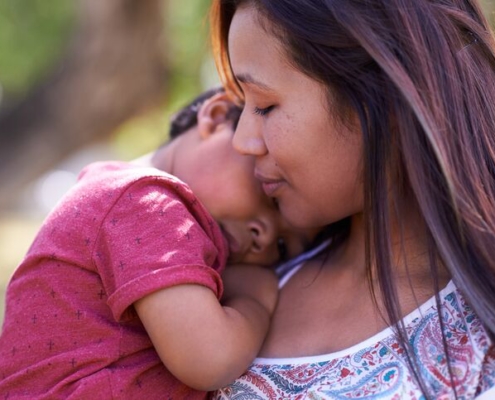Domestic Violence is the use of violence, or the threat of violence, to get and maintain control over the victim in an intimate or family relationship.

Click on the tabs below to learn more about the signs of domestic violence.
Abuser and victim are often in one of the following relationships
- Married or divorced
- Dating
- Engaged
- People who were in one or more of these relationships, but the relationship is over
- Have a child together
- Family members
- Household members
- Former household members
The Abuser may exert control over the victim by doing the following
- Hitting, punching, pushing, hair-pulling, and slapping
- Forced sex or sexual touching
- Chocking- Strangulation is an extremely dangerous form of abuse
- Threats of physical violence or any conduct which causes the victim fear
- Making the victim feel that they are stupid, ugly or unlovable
- Isolating the victim from family and friends so that they have no one to turn to for help
- Preventing the victim from working or going to school
- Threatening to hurt the children or to abduct and hide them from the victim
- Blaming the victim for domestic violence
- Exerting control over the money in the household
- Stalking
- Using social media to frighten or control the victim
What does “Power and Control” mean?
- Domestic Violence extends beyond physical assault.
- Domestic Violence is a pattern of behavior and not an isolated incident.
- Domestic Violence escalates in frequency and severity over time.
- Using violence as a form of control is a choice.
- Perpetrator creates fear and confusion so victims are compliant and silent.
Domestic Violence is Hidden
When violence occurs in a family, it is seldom evident to the outside world. The power coercion requires everyone in the family to keep the secret.
Who Can Be a Victim of Domestic Violence?
Domestic violence crosses all ages, ethnic, racial, socioeconomic, religious and educational boundaries. It happens in heterosexual relationships and relationships involving gay, lesbian, bisexual, transgender and queer people. It is maintained by societal and cultural attitudes, institutions, media and laws which are not consistent in naming this violence as wrong.
Some Victims Stay, Some Leave, Some Return
Many people ask ‘why do victims stay?’ Many victims of domestic violence do leave; some early in the relationship, some later. Many leave and return and leave again as part of a process that takes place over time. Some experts contend that victims leave and return an average of 7 times before the separation is permanent.
Obstacles to Leaving a Domestic Violence Relationship
Fear. Violence often increases and becomes more dangerous (and sometimes lethal) when a victim decides to leave.
Money. The abuser prevents the victim from working and/or completing education or job training. When the victim cannot support herself and her children she can’t leave the abuser.
Housing. The victim has no place to go.
Lack of support from family and friends. The abuser may keep the victim isolated from their support network, or others may be too afraid of the abuser to help the victim
Pressure from family, community, religion and/or culture.
Immigration status.
Guilt, shame, denial, confusion and love.
Children. The abuser may be a good parent, or the abuser may threaten to take the children from the victim, or to hurt them.
How common is Domestic Violence?
One third of women and girls will be victims of DV in their lifetime.
The DV Hotline based in Chicago receives 600 calls every day.
DOMESTIC AND SEXUAL VIOLENCE END HERE
